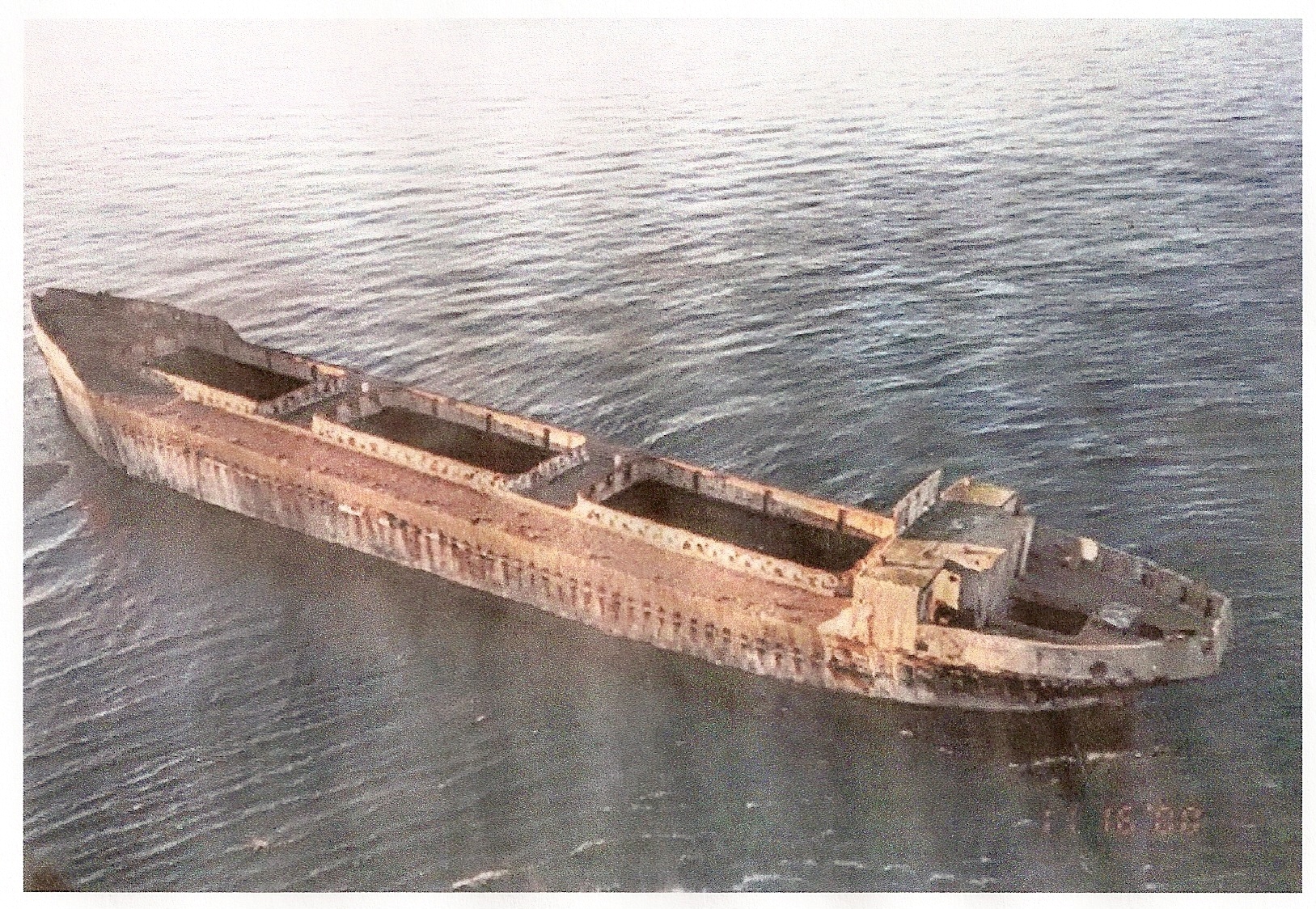
In 1896 John Joseph Blackett (1875-1931) and his father, Ralph, established R. Blackett and Son Ltd., a Darlington-based brick manufacturer and builder. The company was responsible for building a number of Darlington landmarks, including the town’s first power station. When, however, towards the end of World War I the British government ordered 154 concrete hulled barges and tugs, due to a shortage of steel, John Joseph Blackett went into business with F. V. Nettleton to form Blackett’s Concrete Ships Ltd., based at Stockton and Thornaby-on-Tees. The business was incorporated in 1917, but the only two vessels built by them, both barges, were not launched until 1920, more than a year after hostilities had ceased. Orders for a further eight ships were cancelled and John Joseph Blackett reverted to brick manufacturing. One of the barges, however, the 744 ton Crete Joist, was sold to Norway in 1924. In 1942 she drifted onto rocks near Trondheim but did not sink, and the occupying German forces attempted to blow her up, without success. Many years later the Trondheim harbour authorities tried again, but failed to sink her. She still sits at Fevag, near Trondheim, in proud defiance of all that man and nature can inflict upon her.

The Crete Joist was not the only concrete ship built by a Blackett descendant, nor by a long way the largest. In March 1918 the first US concrete ship, the 8,000 ton freighter Faith, was launched in the Redwood City, California shipyard of William Leslie Comyn, a grandson of Ellen Anne Blacket. William Leslie Comyn was born in Hammersmith, West London and was part of a notable family. His elder sister Cicely was co-principal and headmistress of St. Cyprian’s School, Eastbourne (see the George Orwell paragraph in Blacketts and literature) and a brother, Henry Hugh, was a Wimbledon tennis player, and English badminton champion in 1908 and 1909.
